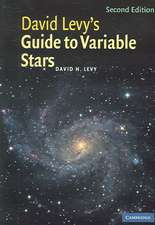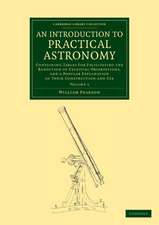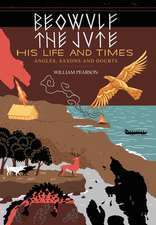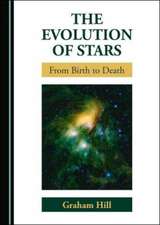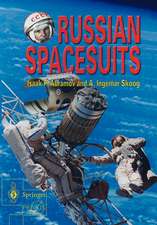An Introduction to Practical Astronomy: Volume 2: Containing Descriptions of the Various Instruments that Have Been Usefully Employed in Determining the Places of the Heavenly Bodies: Cambridge Library Collection - Astronomy
Autor William Pearsonen Limba Engleză Paperback – 4 sep 2013
Din seria Cambridge Library Collection - Astronomy
-
 Preț: 174.27 lei
Preț: 174.27 lei -
 Preț: 278.21 lei
Preț: 278.21 lei -
 Preț: 443.63 lei
Preț: 443.63 lei -
 Preț: 516.77 lei
Preț: 516.77 lei -
 Preț: 336.53 lei
Preț: 336.53 lei -
 Preț: 353.10 lei
Preț: 353.10 lei -
 Preț: 279.95 lei
Preț: 279.95 lei -
 Preț: 382.01 lei
Preț: 382.01 lei -
 Preț: 405.27 lei
Preț: 405.27 lei -
 Preț: 466.36 lei
Preț: 466.36 lei - 19%
 Preț: 457.77 lei
Preț: 457.77 lei -
 Preț: 261.33 lei
Preț: 261.33 lei -
 Preț: 407.40 lei
Preț: 407.40 lei -
 Preț: 319.41 lei
Preț: 319.41 lei -
 Preț: 328.42 lei
Preț: 328.42 lei - 19%
 Preț: 665.82 lei
Preț: 665.82 lei - 19%
 Preț: 533.79 lei
Preț: 533.79 lei -
 Preț: 517.16 lei
Preț: 517.16 lei -
 Preț: 421.04 lei
Preț: 421.04 lei -
 Preț: 279.79 lei
Preț: 279.79 lei -
 Preț: 421.42 lei
Preț: 421.42 lei -
 Preț: 371.96 lei
Preț: 371.96 lei - 19%
 Preț: 433.04 lei
Preț: 433.04 lei -
 Preț: 251.64 lei
Preț: 251.64 lei -
 Preț: 424.95 lei
Preț: 424.95 lei -
 Preț: 418.32 lei
Preț: 418.32 lei -
 Preț: 253.55 lei
Preț: 253.55 lei - 19%
 Preț: 433.20 lei
Preț: 433.20 lei -
 Preț: 421.04 lei
Preț: 421.04 lei -
 Preț: 420.43 lei
Preț: 420.43 lei -
 Preț: 251.27 lei
Preț: 251.27 lei -
 Preț: 327.65 lei
Preț: 327.65 lei -
 Preț: 518.09 lei
Preț: 518.09 lei -
 Preț: 331.31 lei
Preț: 331.31 lei - 19%
 Preț: 667.71 lei
Preț: 667.71 lei -
 Preț: 252.03 lei
Preț: 252.03 lei - 23%
 Preț: 1094.46 lei
Preț: 1094.46 lei -
 Preț: 467.12 lei
Preț: 467.12 lei - 19%
 Preț: 550.01 lei
Preț: 550.01 lei -
 Preț: 265.19 lei
Preț: 265.19 lei - 19%
 Preț: 456.23 lei
Preț: 456.23 lei - 19%
 Preț: 539.56 lei
Preț: 539.56 lei -
 Preț: 464.61 lei
Preț: 464.61 lei -
 Preț: 404.88 lei
Preț: 404.88 lei -
 Preț: 467.89 lei
Preț: 467.89 lei -
 Preț: 317.29 lei
Preț: 317.29 lei - 19%
 Preț: 713.06 lei
Preț: 713.06 lei - 19%
 Preț: 462.00 lei
Preț: 462.00 lei
Preț: 674.46 lei
Preț vechi: 832.66 lei
-19% Nou
Puncte Express: 1012
Preț estimativ în valută:
129.05€ • 135.11$ • 106.79£
129.05€ • 135.11$ • 106.79£
Carte tipărită la comandă
Livrare economică 05-19 aprilie
Preluare comenzi: 021 569.72.76
Specificații
ISBN-13: 9781108064064
ISBN-10: 110806406X
Pagini: 776
Ilustrații: 51 b/w illus.
Dimensiuni: 210 x 297 x 39 mm
Greutate: 1.82 kg
Editura: Cambridge University Press
Colecția Cambridge University Press
Seria Cambridge Library Collection - Astronomy
Locul publicării:Cambridge, United Kingdom
ISBN-10: 110806406X
Pagini: 776
Ilustrații: 51 b/w illus.
Dimensiuni: 210 x 297 x 39 mm
Greutate: 1.82 kg
Editura: Cambridge University Press
Colecția Cambridge University Press
Seria Cambridge Library Collection - Astronomy
Locul publicării:Cambridge, United Kingdom
Cuprins
1. Preliminary remarks; 2. On the situation, structure, and furniture of an observatory; 3. Rotative dome; 4. Refracting telescopes with celestial eye-pieces; 5. Diagonal eye-pieces; 6. Celestial eye-pieces with variable powers; 7. Erect eye-pieces; 8. A popular explanation of the achromatism of the refracting telescope; 9. Stands for achromatic telescopes; 10. Equatorial or parallatic stands; 11. The construction and use of the dynameter; 12. The Dorpat refracting telescope; 13. On reflecting telescopes; 14. Stands for reflecting telescopes; 15. The Herschelian forty feet reflector; 16. Herschelian telescope as constructed by Ramage; 17. On the space-penetrating powers of telescopes; 18. An historical account of the different methods of measuring small celestial arcs; 19. Spider's-line micrometer; 20. Other methods of determining the value of a screw; 21. Micrometrical scale with a constant magnifying power; 22. On the different methods of illuminating the lines in the eye-piece of a telescope; 23. A new polymetric reticle; 24. Reticulated diaphragms; 25. Circular and annular micrometers; 26. La Caille's method; 27. Smeaton's method; 28. Dollond's object-glass micrometer; 29. Experimental determination of the focal length and errors of a divided object-lens; 30. Dollond's improved object-glass micrometer; 31. Dioptric micrometers; 32. Dioptric micrometer by T. Jones; 33. The divided eye-lens micrometer; 34. Ramsden's catoptric micrometer; 35. Dr Maskylene's prismatic micrometer; 36. The cuneiform micrometer; 37. Rochon's crystal micrometer; 38. Methods of determining the constant angle of a doubly refracting prism of rock crystal; 39. The ocular crystal micrometer; 40. The spherical crystal micrometer; 41. Brewster's micrometrical telescope; 42. The lamp-micrometer; 43. Binocular spider's-line and glass-disc micrometers; 44. On the use of position micrometers; 45. Comparison of several micrometers; 46. On clamps and tangent screws; 47. On the vernier; 48. On the reading microscope; 49. On the plumb-line; 50. On the spirit-level; 51. On artificial horizons; 52. On Flamsteed's and La Caile's methods of observing; 53. On the transit clock; 54. The transit instrument; 55. A portable transit-instrument; 56. Directions for the examination and adjustment of a transit-instrument; 57. To determine the exact place for a meridian mark; 58. On the errors of the transit-instrument in connexion with a clock or chronometer; 59. The Moscow transit-instrument; 60. The Greenwich transit-instrument; 61. Observing and registering transits; 62. Reduction of observed transits into mean right ascensions; 63. On the correction of right ascension common to all stars; 64. Transit-circle by Troughton; 65. Reduction of the apparent zenith distance to the mean polar distance; 66. Ramsden's altitude and azimuth circular instrument; 67. The Westbury altitude and azimuth circle; 68. The South Kilworth altitude and azimuth circle; 69. The collimator; 70. On the uses of a portable altitude and azimuth circular instrument; 71. A new portable altitude, azimuth and zenith instrument; 72. The Greenwich mural circle; Chs. 72-104; Plates.
Descriere
Published in 1824–9, this two-volume guide to astronomical observation and calculation was among the first to appear in English.












